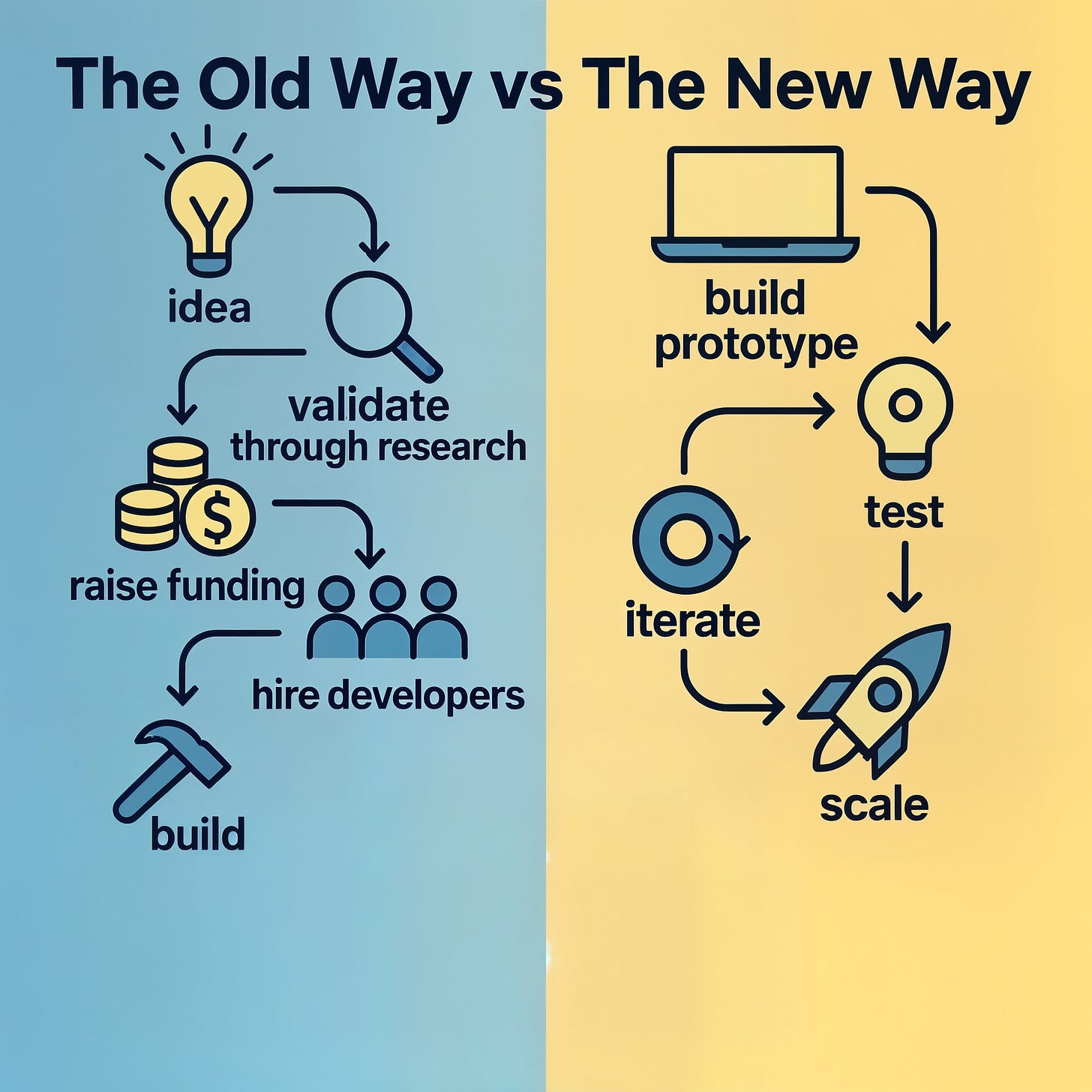The Weekend Idea That Actually Ships
How non-technical founders are suddenly shipping products in days, and making $$$$ while they're at it
Remember that idea you had last month?
The one where you thought "someone should build this" and then immediately dismissed it because you'd need a developer, funding, and months of work, but you don't know how to make any of that happen?
Yeah, that one.
Here's the thing I've been watching happen: those ideas you wrote off as "too expensive to test" are now weekend projects.
The barrier between "I wish this existed" and "here's my working prototype" just disappeared.
When "No Code" Became "No Problem"
Old no-code tools gave you templates and basic functionality.
The new reality? AI-powered tools that understand what you want to build.
This isn't "drag and drop" anymore. It's "describe and deploy."
You can describe your problem in plain English and get a working solution.
Why this matters: you can spend your time and energy on trying to solve the problem, instead of the HOW?
The Problems Worth Solving
Here's what most people miss: the best opportunities aren't the obvious "big" problems.
They're the small, persistent annoyances that feel too niche to matter.
Those boring, repetitive tasks that make you groan every time.
Examples:
Every country has different insurance providers with differently formatted documents.
Parsing these for specific information is a problem that teams deal with constantly. It's boring, annoying, repetitive work; someone would pay to have their time back.
Animation workflows need the same tedious steps every single time.
File organization systems that almost work but not quite. Tracking something specific that no existing app handles right.
These aren't small problems, they look small because they're so specific.
The people dealing with them would pay for a solution.
Build First, Scale Smart
Here's your new approach: build a working prototype first, then validate with real users.
Why does this work better than traditional validation?
Real feedback beats theoretical research every time.
You learn faster when people can try your solution instead of imagining it.
The smart scaling strategy: Start with builder tools to prove your idea works. When you see real traction (users using it regularly, asking for features and willing to pay).
THEN bring in a developer.
At that point, you're not gambling on an unproven idea.
You have users and feedback to guide proper development. You're de-risking the expensive part by proving demand first.
Your Toolkit
Here's how you do this:
Loveable.dev - Perfect for complete beginners. Describe your app in plain English, and it builds it for you. Check out what people are already building: madewithlovable.com
V0.dev - Great for interface-heavy applications. Especially good if you can sketch or describe user interactions clearly.
Bolt.new - Excellent for rapid prototyping. You can iterate on ideas super quickly.
All-hands.dev - Slightly more technical, but powerful for complex workflows.
Replit - Good for experimentation and learning as you build.
My advice? Pick one tool and stick with it for your first project. Don't get caught in tool-hopping paralysis.
Focus on solving the core problem first. You can always add features later, but you can't add users to a tool that doesn't work.
The Bigger Picture
This isn't about new tools, it's about who gets to be a builder.
You no longer need a computer science degree or a technical co-founder to test your ideas.
You don't need to convince anyone that your problem is worth solving before you can prove it works.
Your annoyance might be exactly what thousands of other people have been waiting for.
Or it might be something that makes your life better.
Either way, it's worth building.
JB



Seems like a good starting point to build own applications. Thanks for sharing!
Amazing post!